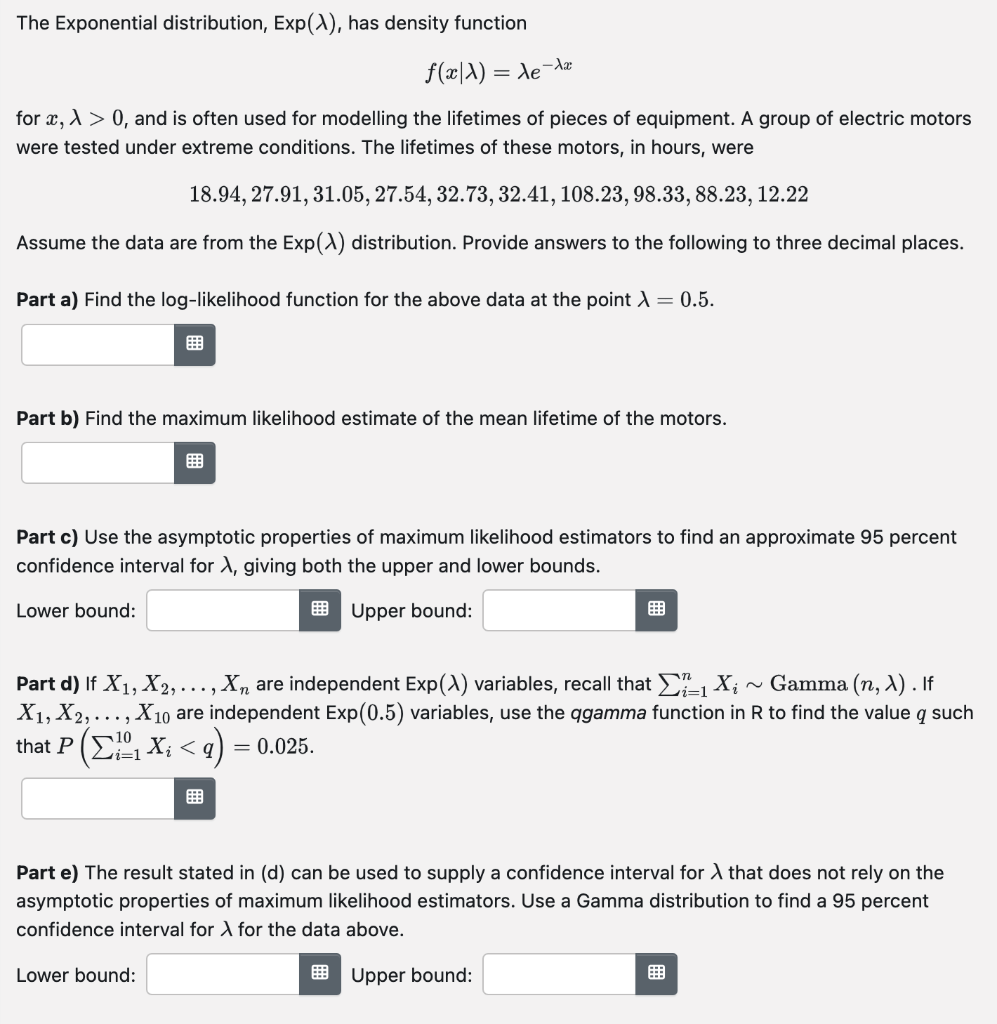Home /
Expert Answers /
Statistics and Probability /
the-exponential-distribution-exp-has-density-function-f-x-e-pa517
(Solved): The Exponential distribution, Exp(), has density function f(x)=e ...

The Exponential distribution, , has density function for , and is often used for modelling the lifetimes of pieces of equipment. A group of electric motors were tested under extreme conditions. The lifetimes of these motors, in hours, were Assume the data are from the distribution. Provide answers to the following to three decimal places. Part a) Find the log-likelihood function for the above data at the point . Part b) Find the maximum likelihood estimate of the mean lifetime of the motors. Part c) Use the asymptotic properties of maximum likelihood estimators to find an approximate 95 percent confidence interval for , giving both the upper and lower bounds. Lower bound: Upper bound: Part d) If are independent variables, recall that . If are independent variables, use the qgamma function in to find the value such that . Part e) The result stated in (d) can be used to supply a confidence interval for that does not rely on the asymptotic properties of maximum likelihood estimators. Use a Gamma distribution to find a 95 percent confidence interval for for the data above. Lower bound: Upper bound:
Expert Answer
a) The log-likelihood function for the data is given byl(?)=log??i=110f(ximid?)=log??10?i=110e??xi=10log?????i=110xi.At ?=0.5, the log-likelihood isl(